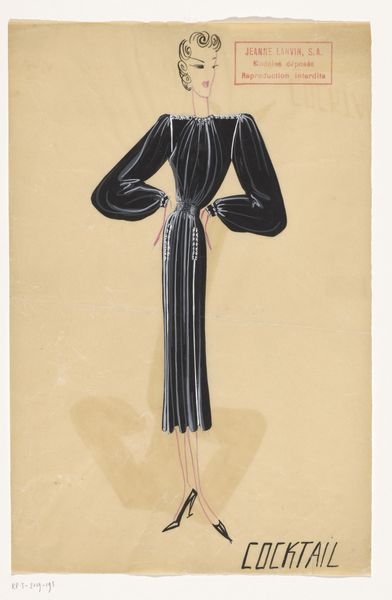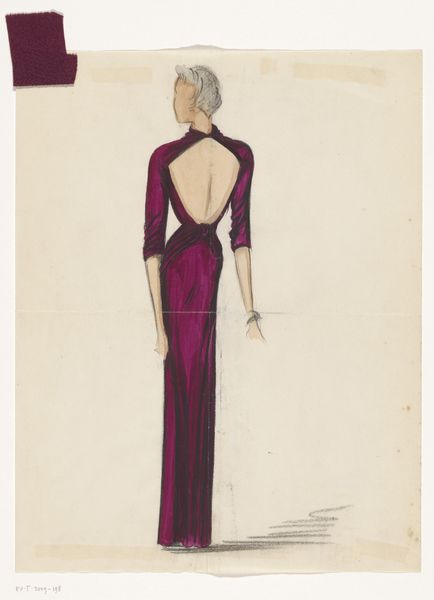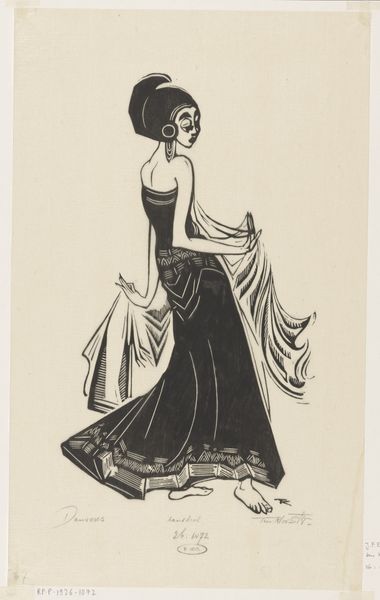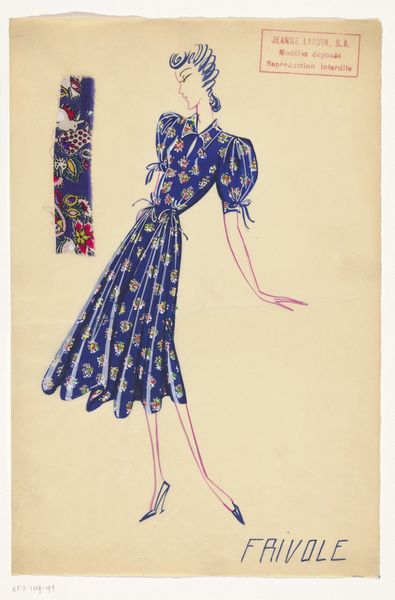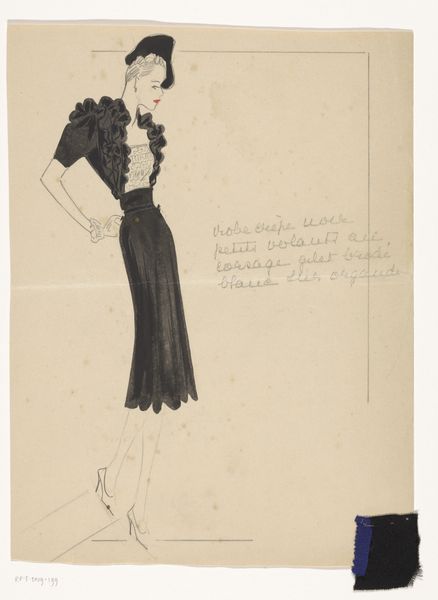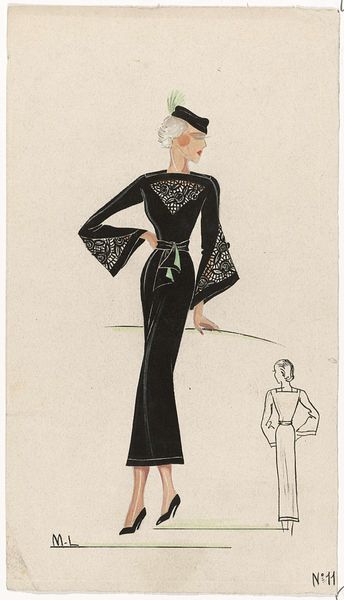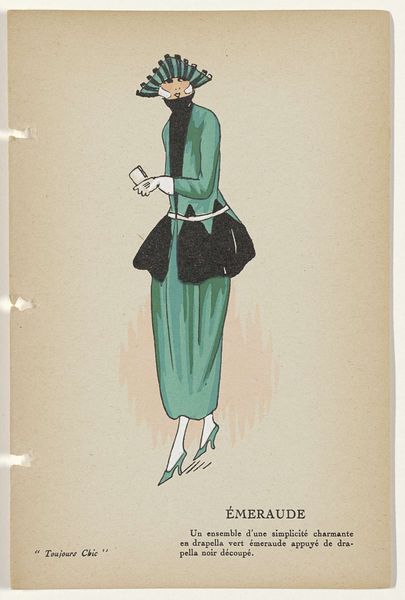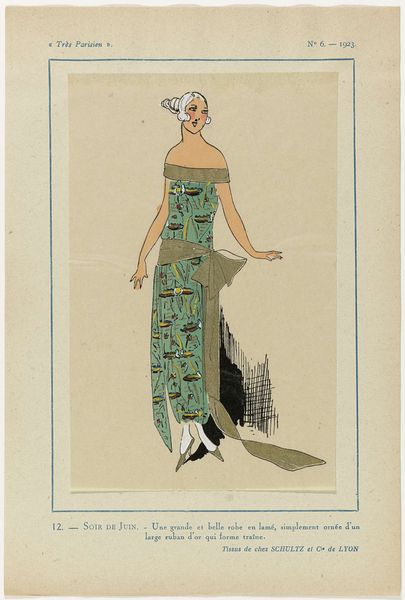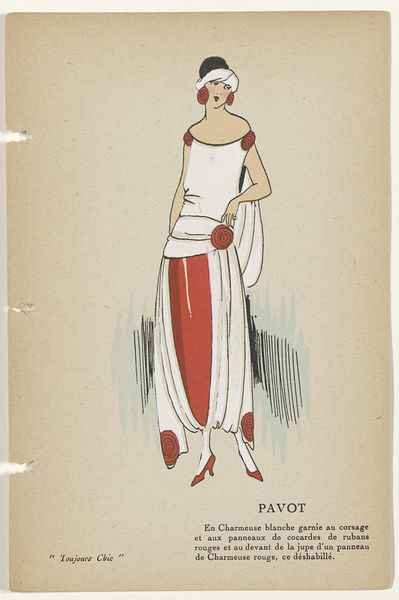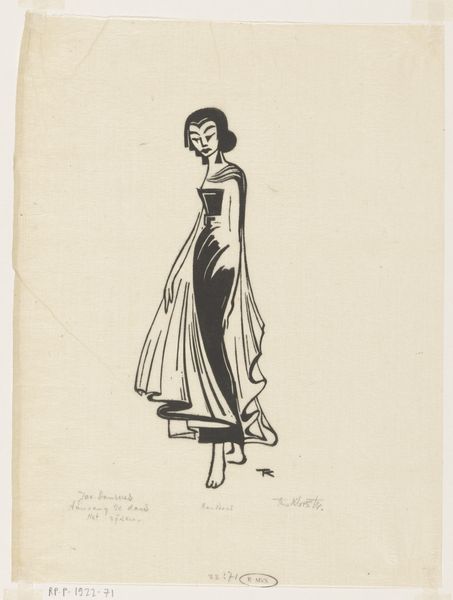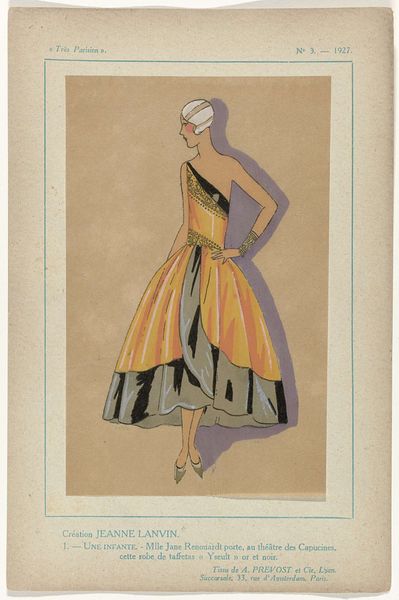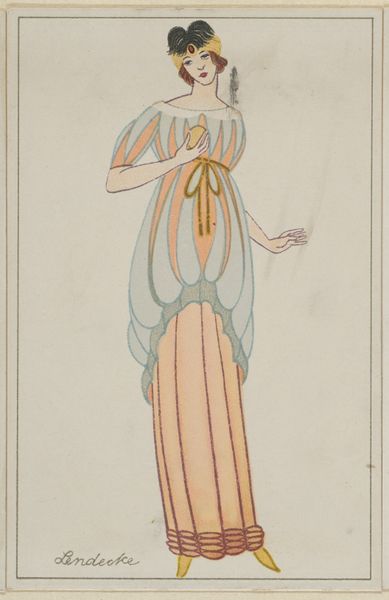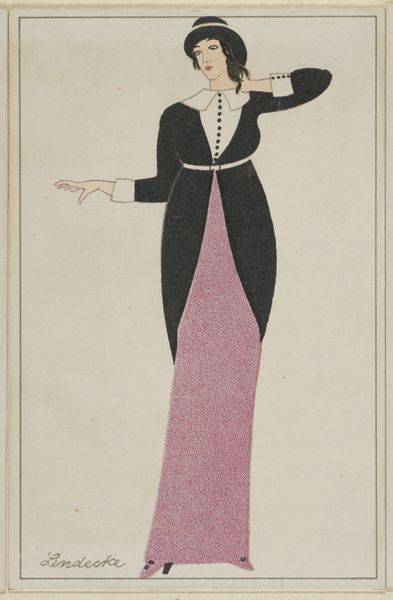
painting, watercolor
#
portrait
#
painting
#
figuration
#
watercolor
#
historical fashion
#
line
#
watercolour illustration
#
history-painting
#
fashion sketch
#
dress
Dimensions: height 305 mm, width 204 mm
Copyright: Rijks Museum: Open Domain
Curator: Right, let's delve into this captivating watercolor by Jeanne Lanvin, entitled "Fugitive," created between 1938 and 1940. It’s part of the Rijksmuseum's collection. What’s your immediate reaction? Editor: She seems poised, elegant even. Yet, that title! There’s a real tension there, isn't there? It feels like captured beauty, beauty contained—perhaps against its will. Like a fashion plate that secretly longs to be torn from the page. Curator: It's interesting you pick up on the inherent tension. The materiality contributes significantly. The use of watercolor lends an ephemeral, almost fleeting quality, sharply contrasting with the structured silhouette of the dress itself. Consider the socio-political backdrop, too. Editor: Absolutely. The late 1930s… the gathering storm clouds over Europe. It's fascinating to think of this "Fugitive" not just as a fashion sketch but perhaps a subtle reflection of the times. Is she escaping, or being captured? I love the ambiguity! Curator: The fashion industry, of course, wasn’t isolated from broader historical forces. Labor practices within Lanvin's ateliers, the consumption patterns of her clientele—all these reflect class structures and power dynamics of the era. Even the fugitive, could have meant escaping labor duties to consume on leaisure. Editor: Right. And that stark, almost graphic style. The line work feels both precise and hurried, fitting perfectly with the word “Fugitive”. I can almost imagine Lanvin sketching this furiously. Is it all watercolour, by the way, or are there any other media used? Curator: Pure watercolor. The brilliance is in how Lanvin manipulates this delicate medium to create such a sense of solidity and form in the dress while the model beneath is almost translucent. It challenges the traditional view of fashion illustration, which, let’s face it, often served purely commercial ends. Editor: It certainly elevates the form. And to think it was intended for, at least primarily, consumerism! But there’s an enduring quality to it, regardless. I wonder, were similar types of artwork common for its time? Curator: Relatively, yes, but its enduring intrigue lies in its synthesis of these material realities with subtle, perhaps even unintentional, emotive expression. And it is, in essence, a very affecting piece. Editor: Yes, exactly. "Fugitive." That tension gets me every time. The very picture of elegant desperation. Well, thanks! Curator: Thank you. An enlightening look into "Fugitive", and the world it occupied.
Comments
No comments
Be the first to comment and join the conversation on the ultimate creative platform.
